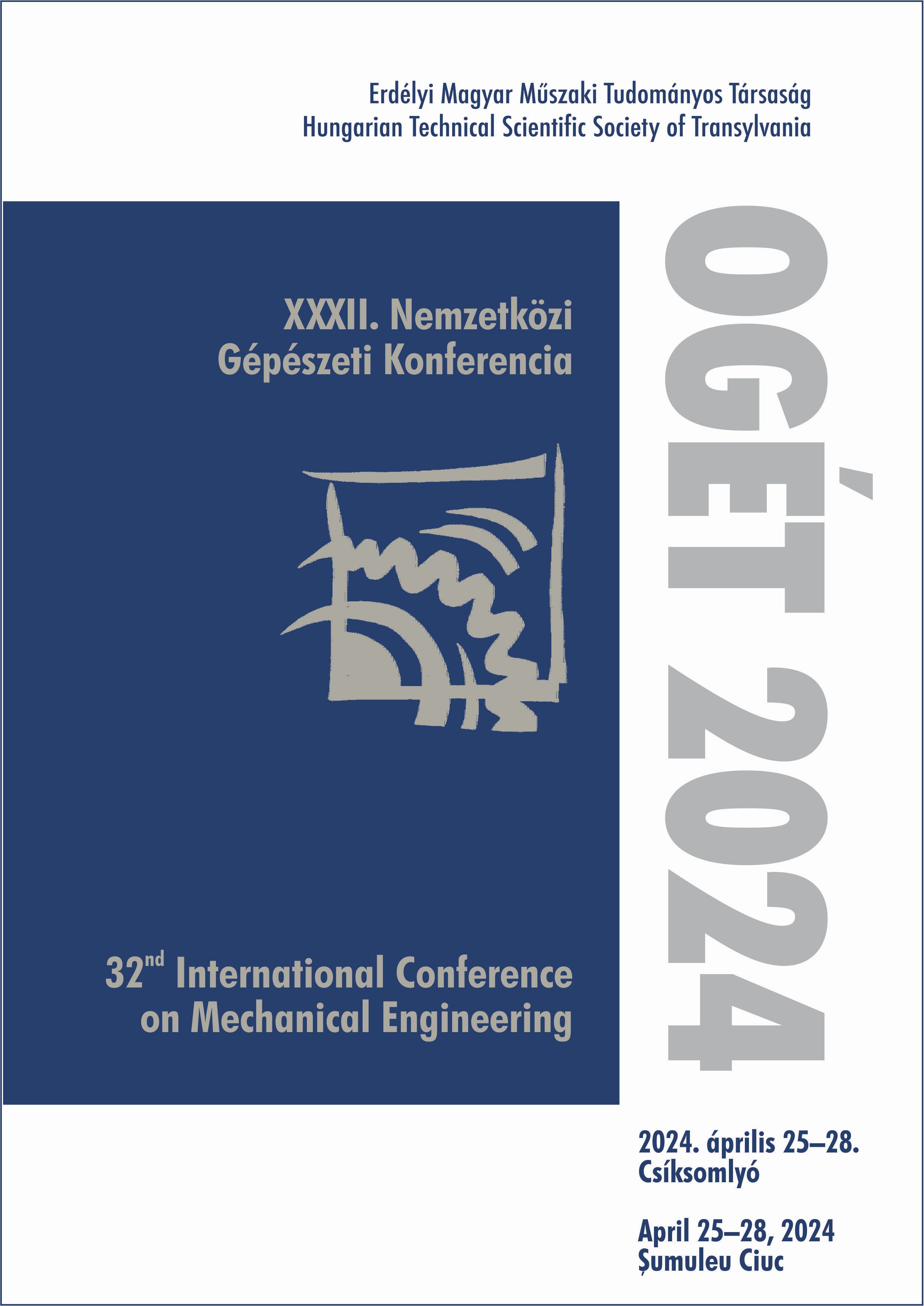A dinamikus marási szerszámpályák hatékonyságának növelése az összekötő mozgások optimalizálásával
Increasing the efficiency of dynamic milling tool paths by optimizing the linking movements
Keywords:
dynamic milling, linking movements, tool path optimisation, machining time, /, dinamikus marás, összekötő mozgások, szerszámpálya optimalizálás, megmunkálási időAbstract
Over the past two decades, rough milling operations have been developing remarkably, thanks to the emergence of dynamic milling strategies. Through complex geometric calculations, modern CAM systems can create tool paths that ensure uniform tool load and continuous path curvature, which are essential in dynamic milling, but at the same time, they do not emphasise optimising the linking movements. The paper presents a method that can significantly reduce machining time by refining linking movements while preserving tool life.
Kivonat
Az elmúlt két évtizedben a nagyoló forgácsolási műveletek látványos fejlődésen mentek keresztül a dinamikus marási stratégiák megjelenésének köszönhetően. A korszerű CAM rendszerek összetett geometriai számítások révén képesek olyan szerszámpályákat létrehozni, amelyek biztosítják a dinamikus marásnál létfontosságú egyenletes szerszámterhelést és folytonos pályagörbületet, ugyanakkor az összekötő mozgások optimalizálására nem fektetnek kellő hangsúlyt. A cikkben egy olyan algoritmus kerül bemutatásra, amely ezen mellékmozgások finomításával lehetővé teszi a megmunkálási idő jelentős csökkenését a szerszám éltartamának megőrzése mellett.
References
X. Yang, X. Cai, W. Yang, and Y. You, ‘Novel Tool Path Generation Method for Pocket Machining Using Sound Field Synthesis Theory’, Machines, vol. 11, no. 2, Art. no. 2, Feb. 2023, doi: 10.3390/machines11020131.
Y. Li, C.-H. Lee, and J. Gao, ‘From computer-aided to intelligent machining: Recent advances in computer numerical control machining research’, Proc. Inst. Mech. Eng. Part B J. Eng. Manuf., vol. 229, no. 7, Art. no. 7, Jul. 2015, doi: 10.1177/0954405414560622.
A. Jacso, G. Matyasi, and T. Szalay, ‘The fast constant engagement offsetting method for generating milling tool paths’, Int. J. Adv. Manuf. Technol., May 2019, doi: 10.1007/s00170-019-03834-8.
A. Jacso and T. Szalay, ‘Optimizing the numerical algorithm in Fast Constant Engagement Offsetting Method for generating 2.5D milling tool paths’, Int. J. Adv. Manuf. Technol., vol. 108, no. 7, Art. no. 7, Jun. 2020, doi: 10.1007/s00170-020-05452-1.
D. Liu, Y. Zhang, M. Luo, and D. Zhang, ‘Investigation of Tool Wear and Chip Morphology in Dry Trochoidal Milling of Titanium Alloy Ti–6Al–4V’, Materials, vol. 12, no. 12, Art. no. 12, Jun. 2019, doi: 10.3390/ma12121937.
A. Jacso, B. S. Sikarwar, R. K. Phanden, R. K. Singh, J. Ramkumar, and G. N. Sahu, ‘Optimisation of tool path shape in trochoidal milling using B-spline curves’, Int. J. Adv. Manuf. Technol., vol. 121, no. 5, pp. 3801–3816, Jul. 2022, doi: 10.1007/s00170-022-09527-z.
A. Jacso, Z. Lado, R. K. Phanden, B. S. Sikarwar, and R. K. Singh, ‘Bézier curve-based trochoidal tool path optimization using stochastic hill climbing algorithm’, Mater. Today Proc., Dec. 2022, doi: 10.1016/j.matpr.2022.12.056.
A. Gerencser and A. Jacso, ‘CAM rendszerek korszerű nagyoló ciklusainak kísérleti és szimulációs vizsgálata’, XXVII Nk. Gép. Konf. OGÉT 2019, no. pp. 145-148., Art. no. 145-148., 2019.


